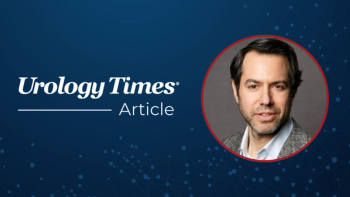
Novel Approaches and Recent Trial Updates in Intermediate-risk NMIBC
This video segment explores various investigational strategies, including the use of agents like UGN 102, and recent clinical trials for intermediate-risk NMIBC. The conversation highlights the importance of balancing side effects with efficacy and the shift towards non-surgical management in treating intermediate-risk NMIBC and in the BCG-naive population.
Episodes in this series

This is a synopsis of the Viewpoints video series featuring moderator, Sam S. Chang, MD, MBA, from Vanderbilt University School of Medicine, and panelists Gary Steinberg, MD, FACS, from Rush University Medical Center, Mark Tyson, MD, of Mayo Clinic Phoenix, Roger Li, MD, from Moffitt Cancer Center, and Sandip M. Prasad, MD, MPhil, of Morristown Medical Center.
Episode 11 explores investigational strategies and clinical trials for intermediate-risk non-muscle invasive bladder cancer (NMIBC) in the Bacillus Calmette-Guérin (BCG)-naive population. The panel discusses the potential of oncolytic virus therapy and various chemotherapy options, with particular emphasis on the use of agents like UGN 102 for chemoablation. The conversation underscores the importance of balancing side effects with efficacy and the shift towards non-surgical management in treating intermediate-risk NMIBC. The panel highlights the clinical development of the investigational agent UGN-102, which is a sustained release, hydrogel-based formulation designed to enable longer exposure of bladder tissue to mitomycin, thereby enabling the treatment of tumors by non-surgical means. The product is currently in phase 3 development for the treatment of patients with LG-IR-NMIBC. The panel share the value of an oncolytic virus to treat recurrent low-grade tumors in the intermediate-risk group and discuss how stimulating an immune memory against tumor-associated antigens might prevent further tumor occurrences. The panelists review the ATLAS (NCT04688931) and ENVISION (NCT05243550) studies, emphasizing the strong data from these topical chemo-ablative therapies. The ENVISION study, involving 240 patients, demonstrates a significant complete response rate at three months post-treatment, highlighting the efficacy of chemoablation. Comparatively, the ATLAS study, a randomized trial comparing UGN 102 to TURBT, shows superior durability of response with UGN 102. The panelists suggest that this approach may effectively treat occult tumors, often classified as recurrences, emphasizing the advantages of treating both visible and unseen tumors with this method. UGN 102 is shown to be effective in providing constant exposure to the therapeutic agent, offering a potential paradigm shift towards non-surgical management of intermediate-risk NMIBC. The discussion also touches on the importance of considering patients' quality of life and minimizing the treatment burden. The evolving landscape in the NMIBC treatment underscores the potential of these novel therapies in managing intermediate-risk NMIBC, particularly for BCG-naive patients.
*Video synopsis is AI-generated and reviewed by Urology Times® editorial staff.
Newsletter
Stay current with the latest urology news and practice-changing insights — sign up now for the essential updates every urologist needs.




















